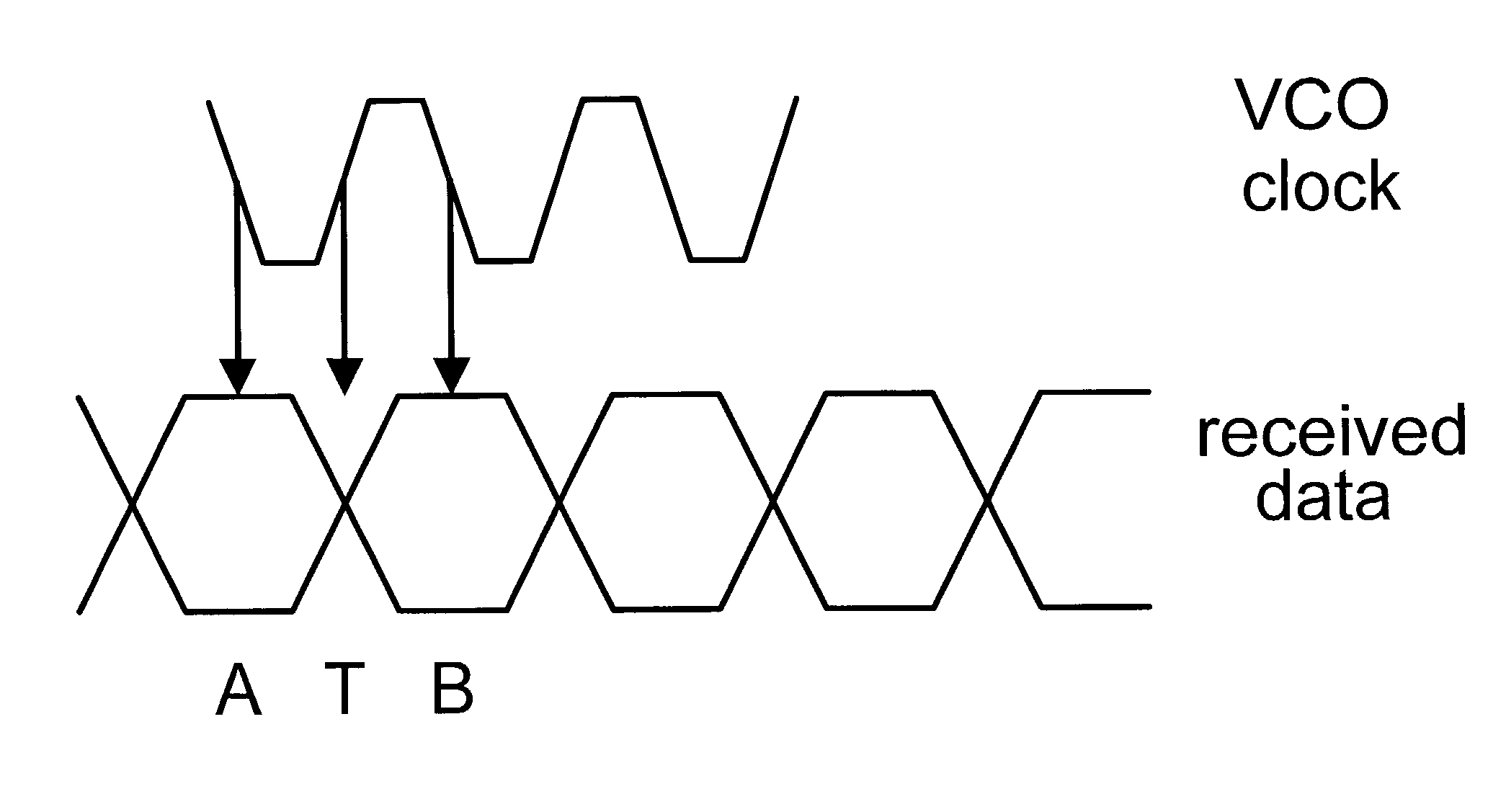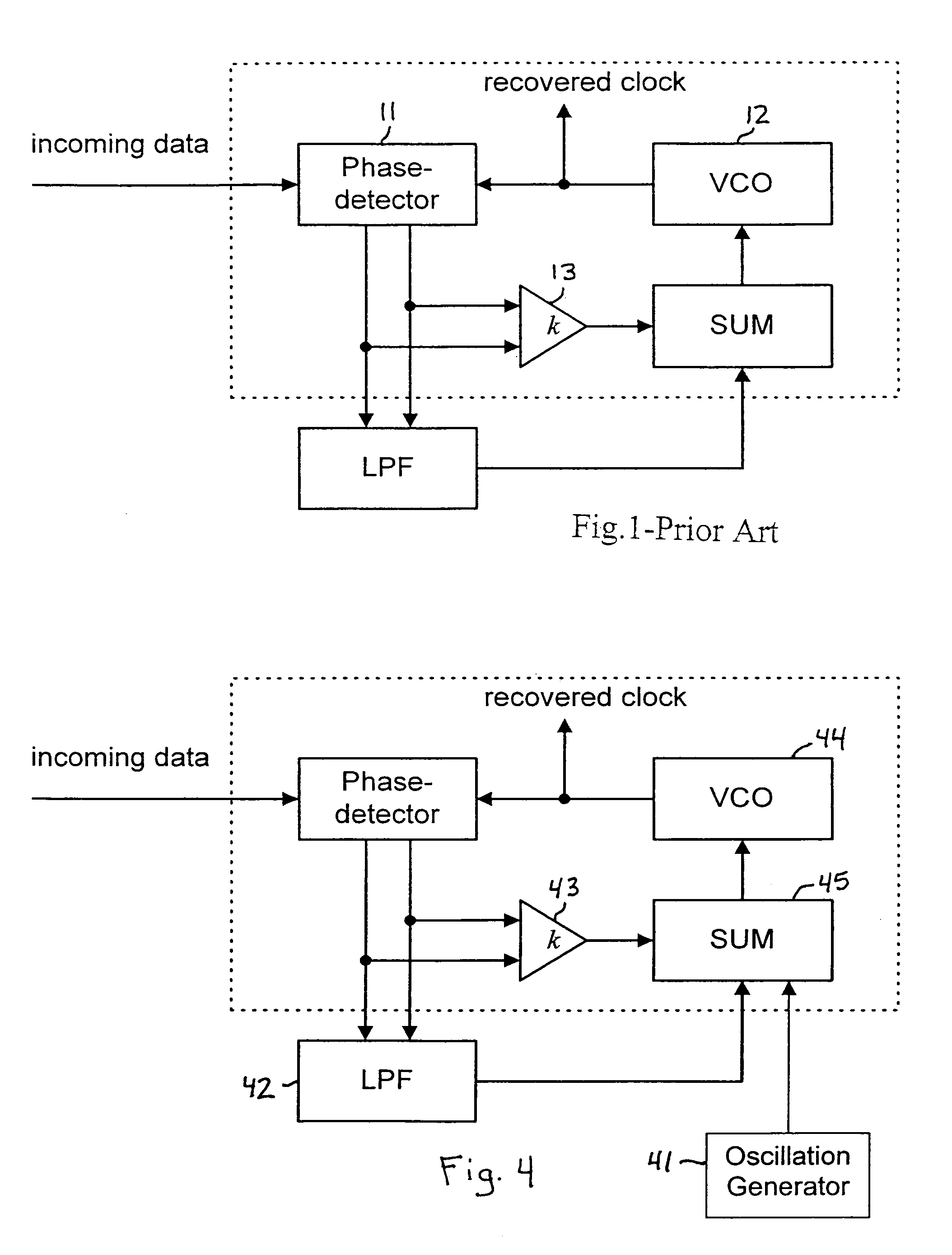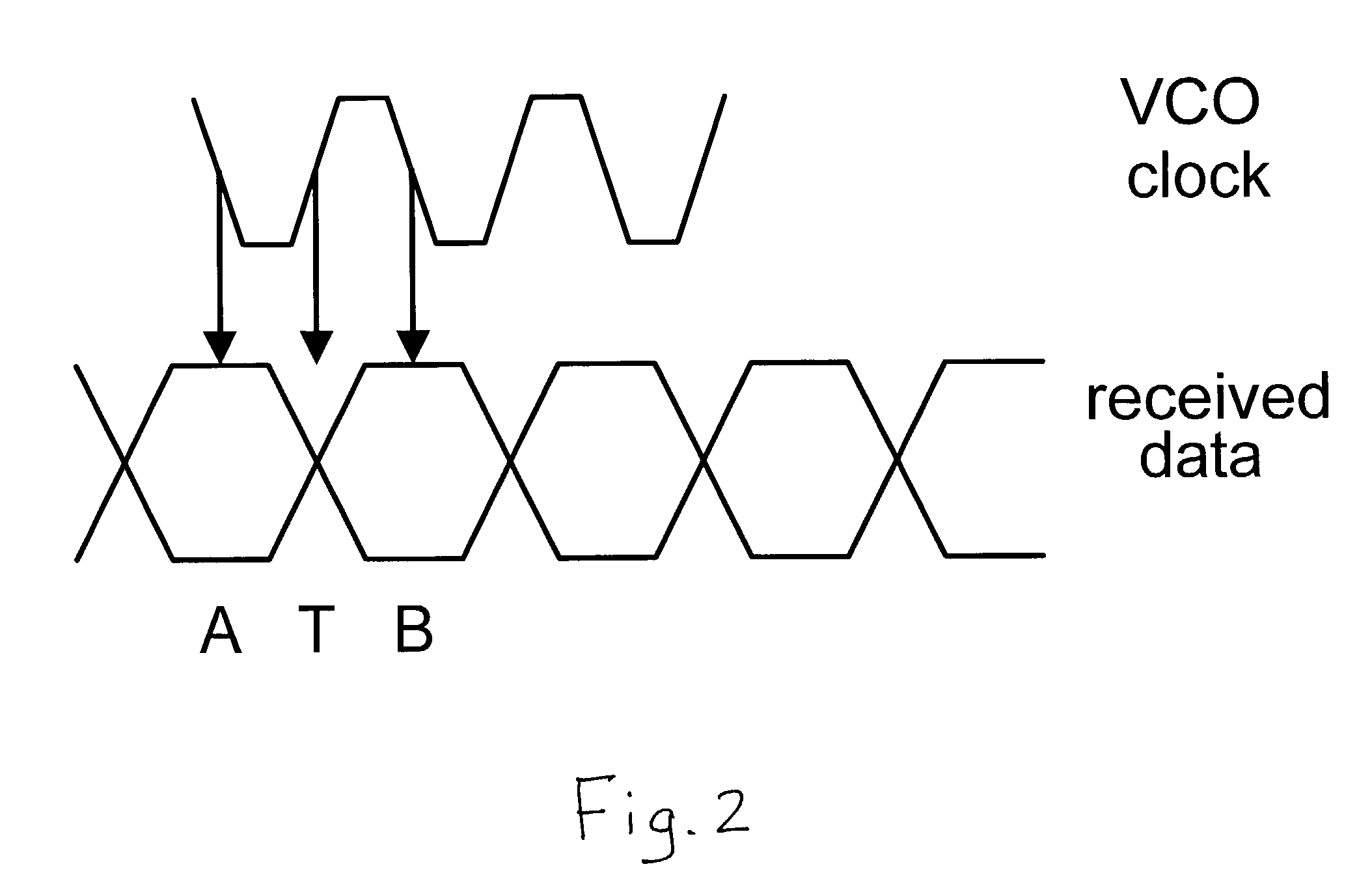Fast clock acquisition enable method using phase stir injection to PLL for burst mode optical receivers
a technology of optical receivers and enable methods, applied in pulse techniques, reradiation, instruments, etc., can solve the problems of no existing devices using discrete phase correlation pll architectures, data in packets may actually be lost, and cannot distinguish between a 0 degree phase shift and a 180 degree phase shift, so as to prolong the synchronization time, the time required to synchronize the internal clock with the received data is always shortened.
- Summary
- Abstract
- Description
- Claims
- Application Information
AI Technical Summary
Benefits of technology
Problems solved by technology
Method used
Image
Examples
Embodiment Construction
[0025]A preferred embodiment of the invention is described below. It should be noted that this and any other embodiments described below are exemplary and are intended to be illustrative of the invention rather than limiting.
[0026]Broadly speaking, the invention comprises improved systems and methods for fast acquisition of a clock signal. In one embodiment, the present system is based upon a double-loop PLL architecture. Since this type of architecture normally has poor acquisition speed when the clock signal to be recovered is around 180 degrees out of phase with the VCO signal, an oscillating signal is injected into the VCO signal. The purpose of injecting this signal is to bump the system out of the quasi-stable state around 180 degrees and to allow the system to stabilize in phase (0 or 360 degrees out of phase). The oscillating signal is damped so that it will not hinder stabilization of the system with the signals in phase.
[0027]It should be noted that, for the purposes of th...
PUM
 Login to View More
Login to View More Abstract
Description
Claims
Application Information
 Login to View More
Login to View More - R&D
- Intellectual Property
- Life Sciences
- Materials
- Tech Scout
- Unparalleled Data Quality
- Higher Quality Content
- 60% Fewer Hallucinations
Browse by: Latest US Patents, China's latest patents, Technical Efficacy Thesaurus, Application Domain, Technology Topic, Popular Technical Reports.
© 2025 PatSnap. All rights reserved.Legal|Privacy policy|Modern Slavery Act Transparency Statement|Sitemap|About US| Contact US: help@patsnap.com



